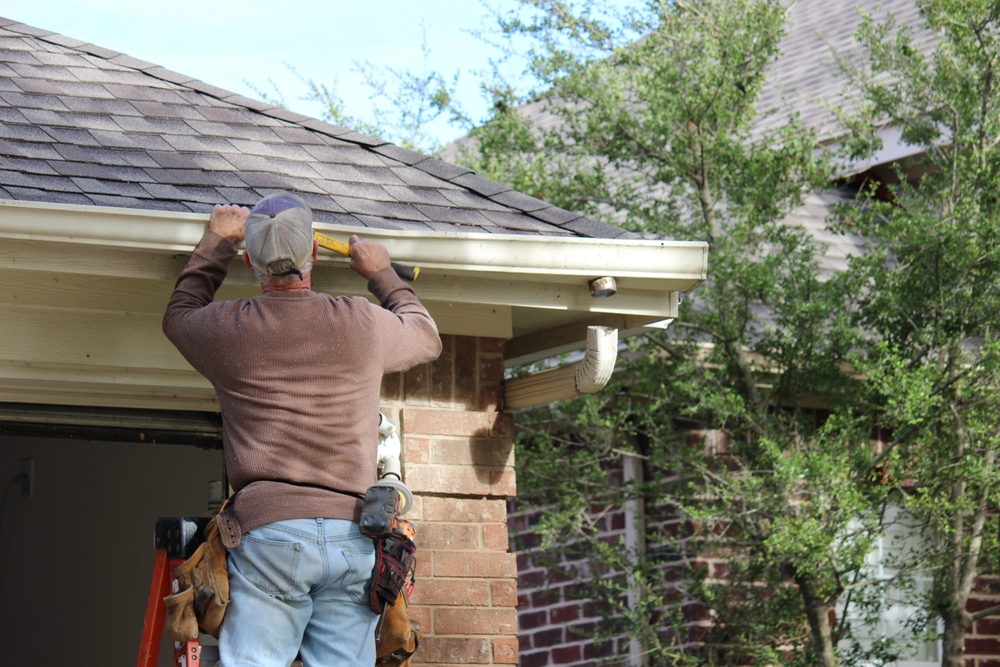
by elizabeth@evenbound.com | Feb 20, 2024 | Gutter Systems
Gutters play a crucial role in your roof’s overall health and longevity. Efficient gutter systems help divert rainwater away from your home’s foundation, preventing water damage, erosion, and potential structural issues.
With the rise of the do-it-yourself trend in home improvement projects, many homeowners are tempted to tackle gutter installation themselves. In this blog, we’ll weigh the pros and cons, discuss the step-by-step process of DIY gutter installation, and explore whether or not this route is the way to go.
So, is DIY gutter installation worth it? Let’s find out.
DIY Gutter Installation Step-by-Step:
By following these step-by-step instructions, you can tackle DIY gutter installation with confidence. However, it’s essential to exercise caution and prioritize safety throughout the process. If you’re unsure or uncomfortable with any aspect of the installation, don’t hesitate to seek professional assistance.
1. Gather Necessary Tools and Materials
When tackling a DIY project, having all the necessary tools and materials is crucial. For gutter installation, this includes a ladder, tape measure, level, drill or screwdriver, gutter hangers and brackets, gutter sections, downspouts, outlets, sealant, and safety gear like gloves and goggles.
2. Measure and Plan Gutter Placement
Measure twice, cut once– this age-old advice holds true regarding gutter installation. Take precise measurements of your roofline to determine the required length of gutter sections and downspouts. Carefully plan the placement of gutters to ensure optimal water flow and drainage away from your home’s foundation.
3. Install Gutter Hangers and Brackets
Proper support is essential for the stability and longevity of your gutter system. Install gutter hangers and brackets along the fascia board at even intervals, ensuring they’re securely anchored and level.
4. Attach Gutter Sections and Corners
With the hangers in place, it’s time to attach the gutter sections and corners. Fit the sections together using connectors or screws to secure them in place. Pay close attention to alignment and make sure there’s a seamless connection between sections.
5. Secure Downspouts and Outlets
Downspouts are essential to gutter installation; they direct water away from your home. Secure them to the side of your house, ensuring they’re angled downward for proper drainage. Install outlets where necessary to connect downspouts to the gutter system.
6. Check for Proper Slope and Alignment
Once the gutters are in place, double-check for proper slope and alignment. Gutters should be sloped slightly towards the downspouts to facilitate water flow. Use a level to ensure they’re evenly aligned along the roofline.
7. Seal Seams and Connections
To prevent leaks and ensure a watertight seal, seal the seams and connections with a high-quality gutter sealant. Apply sealant generously around joints, corners, and other areas where water can penetrate.
Tips for DIY Gutter Installation:
We encourage you to take these tips to heart to enhance your safety, accuracy, and efficiency throughout your DIY gutter installation project. However, if you encounter challenges or feel uncertain about any aspect of the process, don’t hesitate to consult with a professional roofing company like Werner Roofing for expert assistance.
- Safety should always be your top priority when undertaking DIY gutter installation. Before starting any work, make sure your ladder is sturdy and positioned on level ground. Use proper safety gear, including gloves and goggles, to protect yourself from sharp edges and debris. Exercise caution when working at heights, and never attempt to install gutters alone.
- The success of your gutter installation project hinges on accurate measurements and meticulous planning. Take the time to measure your roofline carefully and plan the placement of gutters and downspouts accordingly. Consider factors such as the slope of your roof, the direction of water flow, and the location of obstacles like trees and vents.
- Weather conditions can significantly impact the success of your gutter installation project. It’s ideal to choose a dry, mild day to tackle the installation since rain or extreme temperatures can hinder progress and compromise the integrity of the gutters. Avoid working in windy conditions, as gusts can make handling materials and climbing ladders hazardous.
Common Mistakes of DIY Gutter Installation:
By being mindful of these common mistakes and taking proactive measures to avoid them, you can ensure a successful and trouble-free gutter installation project. If you’re unsure about any aspect of the process, there’s no shame in leaving it to the professionals.
- One of the most common mistakes in DIY gutter installation is failing to achieve the correct slope and alignment. Gutters should be installed with a slight downward slope towards the downspouts for proper water drainage. Improper slope or alignment can lead to water pooling, overflow, and potential damage to your home’s foundation or landscaping.
- Inadequately securing gutter hangers and brackets can lead to sagging gutters, improper water flow, and potential damage to your home’s exterior. Ensure that hangers and brackets are securely anchored to the fascia board at regular intervals and that they’re level and aligned correctly.
- Sealing seams and connections prevents leaks and ensures a watertight gutter system. Neglecting to seal seams and connections can result in water infiltration, water damage to your home’s interior, and mold growth.
- DIYers often overlook local building codes and regulations when installing gutters, leading to compliance issues and potential fines. Before starting your project, familiarize yourself with local requirements regarding gutter installation, including setbacks, materials, and drainage regulations.
- Working at heights, handling heavy materials, and using power tools pose potential safety hazards. Always prioritize safety by using proper equipment, following safety guidelines, and knowing your limits. If you’re uncomfortable or unsure about any aspect of the installation process, it’s best to seek professional assistance to avoid accidents or injury.
The Benefits of Hiring Professional Roofing Companies:
Overall, the benefits of hiring a professional roofing company for gutter installation far outweigh the risks and uncertainties associated with DIY approaches. From expertise and efficiency to long-term performance and peace of mind, experienced roofers offer invaluable services.
- Expertise and Experience – Professional roofing companies bring years of knowledge and experience. Their teams of skilled technicians are well-trained in the latest industry standards, techniques, and best practices for gutter installation.
- Time and Cost Efficiency – While DIY gutter installation may seem cost-effective at first glance, it often becomes more time-consuming and costly in the long run. Professional roofing companies have the resources and tools to complete gutter installation projects efficiently and promptly.
- Assurance of Proper Installation and Long-Term Performance – Professional roofers have the expertise to assess your home’s unique requirements and recommend the most suitable gutter system. You can enjoy peace of mind knowing that your gutters will function optimally and protect your home from water damage for years to come.
- Warranty Coverage – If there are any issues or defects with your gutter system, reputable roofing companies like Werner Roofing will stand behind their work and address any concerns promptly and effectively. With warranty coverage, you can rest easy knowing your investment is safeguarded.
Trust Werner Roofing for Your Gutter and Roofing Needs
When considering gutter and roofing needs, we encourage readers to turn to our team at Werner Roofing. We’re a trusted name in the industry known for our commitment to excellence and customer satisfaction. With skilled professionals and a dedication to quality craftsmanship, we provide comprehensive gutter and roofing solutions tailored to each homeowner’s needs and preferences.
Don’t take chances with DIY gutter installation. Contact Werner Roofing – we’re happy to help!
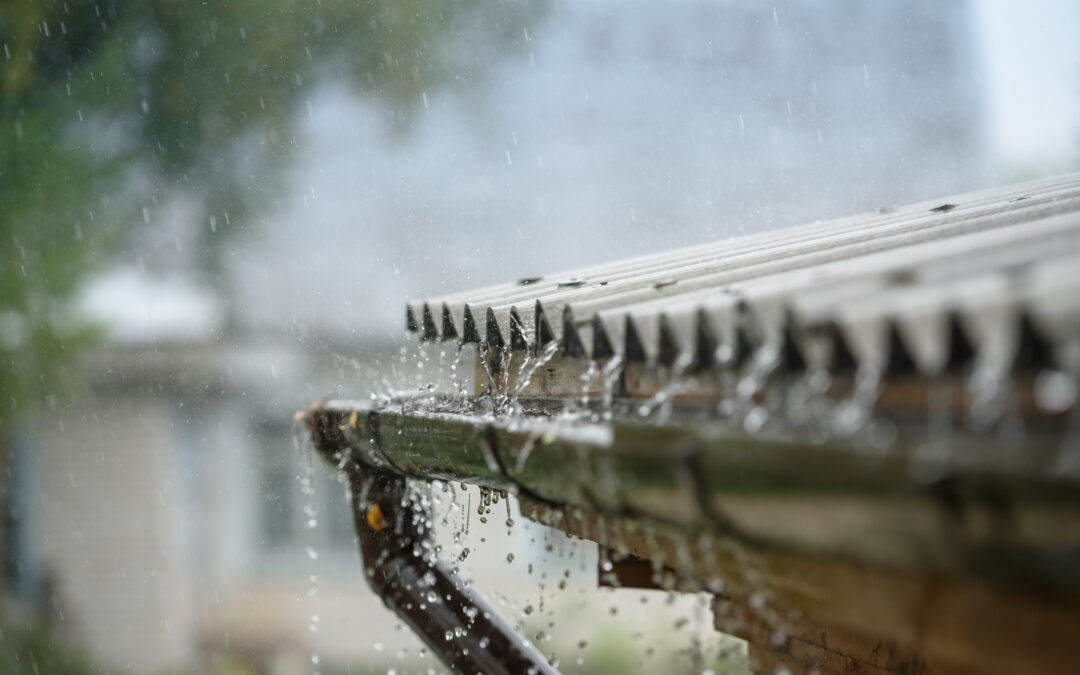
by Jeralin-Admin | Oct 26, 2023 | Gutter Systems
When it comes to making our homes more eco-friendly, we often think about solar panels, energy-efficient appliances, and smart thermostats. However, the gutter system is another aspect of our homes that can contribute to sustainability.
Yes, those seemingly insignificant channels along our roofs are key to sustainable roofing, play a crucial role in harvesting rainwater, and can have a major impact on the environment. Learn more about how implementing these eco-friendly gutter solutions can help you reduce your environmental footprint.
1. Rainwater Harvesting
For those committed to sustainable living, installing a rainwater harvesting system is a fantastic option. One of the most accessible and effective ways to harvest rainwater is by using rain barrels. These barrels are placed beneath downspouts to collect rainwater as it flows off the roof. Rainwater can be used for various purposes, such as watering your garden or lawn, or even for household chores like washing your car.
Rain barrels come in various sizes and designs to suit your needs and aesthetics. They not only reduce your water bill but also help alleviate the strain on municipal water supplies, particularly during dry seasons. When you harvest rainwater, you’re conserving a precious resource and reducing the energy required to pump and treat water.
2. Gutter Guards: Preventing Debris Buildup
Maintaining clean gutters is essential for their proper function and longevity. When leaves, twigs, and debris accumulate in your gutters, it can lead to blockages and damage your home’s foundation. Instead of using energy-intensive methods like leaf blowers or frequent manual cleaning, consider installing gutter guards.
Gutter guards are designed to keep debris out while allowing water to flow freely. They reduce the need for frequent gutter cleaning and help prevent clogs, which can lead to water overflow and potential damage. By keeping your gutters clean and functional, you’re ensuring efficient rainwater management without compromising sustainability.
3. Sustainable Roofing Materials: An Eco-Friendly Choice
Before rainwater reaches your gutters, it comes into contact with your roof. Choosing sustainable roofing materials can significantly impact the quality and quantity of rainwater you collect for harvesting.
Opt for roofing materials like metal, clay tiles, or even green roofs. Often made from recycled materials, metal roofs are durable and can efficiently channel rainwater into your gutters. Clay tiles provide a natural and eco-friendly look while allowing water to flow smoothly. Green roofs, covered with vegetation, capture rainwater, provide insulation, and reduce urban heat island effects.
4. High-Quality Gutters and Downspouts: Durability Matters
Investing in high-quality gutters and downspouts is another eco-friendly choice. Durable gutters made from materials like aluminum or copper can last for decades, reducing the need for frequent replacements. This saves resources and minimizes the environmental impact associated with manufacturing and transportation.
Moreover, consider seamless gutters, which have fewer joints and are less prone to leaks. This reduces water wastage and the potential for water damage to your home. When selecting downspouts, opt for larger sizes that can handle heavy rainfall efficiently, preventing overflow and erosion.
Werner Roofing Can Help With All Your Gutter and Eco-Friendly Roofing Solutions
Sustainable roofing encompasses a range of choices that collectively reduce your environmental footprint while saving you money and resources. From rain barrels to gutter guards, there are numerous ways to make your home more environmentally friendly. By incorporating these solutions, you’re contributing to a more sustainable future and enjoying the practical benefits of reduced water bills and a well-maintained home.
If you’re ready to plunge into eco-friendly gutter solutions and embrace a greener, more sustainable way of living, contact Werner Roofing today. We offer a range of sustainable roofing solutions that will help you live a greener life.
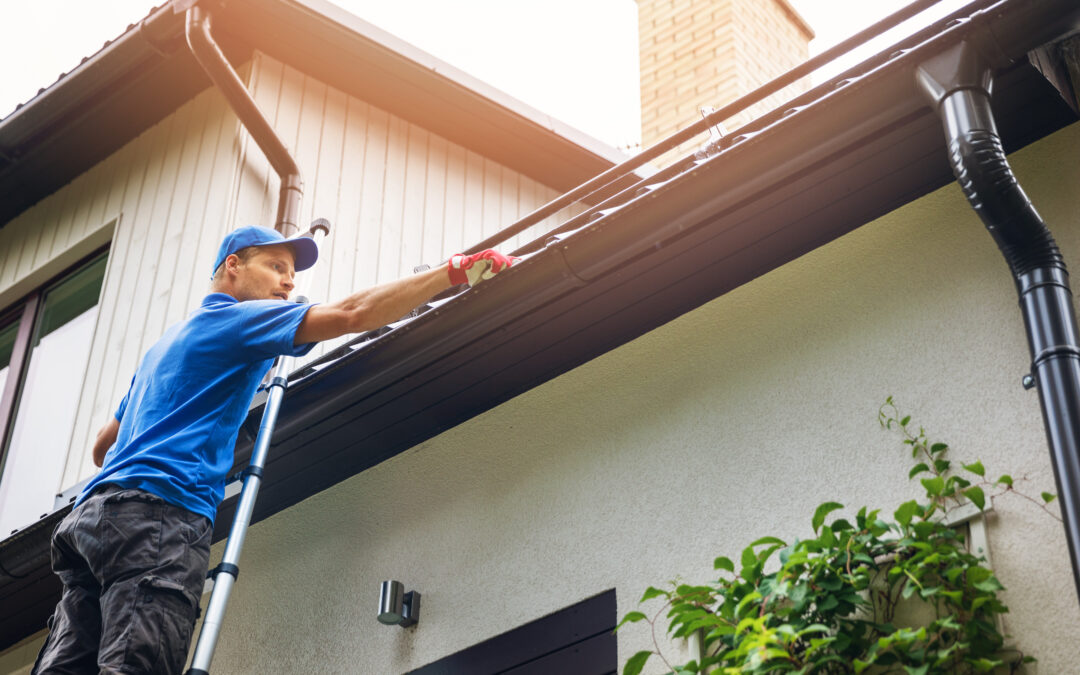
by Jeralin-Admin | Aug 11, 2023 | Gutter Systems
If you’re a homeowner, you’ve no doubt discovered just how important gutters are to the well-being of your house. How do you decide which kind is best? We’re here to help. We’ll compare seamless gutters vs. sectional gutters so you can choose the best option for your home.
What are Seamless Gutters?
Seamless gutters are exactly what they sound like – long and continuous gutters without any joints, separate sections, or seams. Any seams are found at the end of the gutter near the downspouts. Seamless gutters are most commonly made of aluminum and come in a few different styles:
- K-style gutters have flat bottoms and decorative edges (most likely a curved shape) to match the crown molding. K-style gutters are very easy to install and, therefore, quite popular in many modern homes.
- Half-round gutters are just as they sound, a trough, tube-like shape, most commonly found on older homes. While they are a bit more clog-prone, there are ways to combat that issue.
- Box-style gutters are more industrial-looking and popular on commercial properties. They’re effective against heavy rain or snow and can be used on residential homes for a more industrial aesthetic. Box-style gutters aren’t installed on roofs’ edges; they are tucked into the shingles on a roof.
What are Sectional Gutters?
Sectional gutters are made by snapping or welding each piece of metal into place to form the full rain gutter. Unlike seamless gutters, you can see where each section connects at a seam to the next section. Sectional gutters can be made of many materials, including copper, zinc, or aluminum.
Comparing Seamless Gutters vs. Sectional Gutters
Let’s explore the advantages and disadvantages of each type of gutter so you can make an educated decision for your house.
Pros of Seamless Gutters:
- Seamless gutters are less prone to leakage. Since seamless gutters are just one long piece of metal rather than a bunch of pieces, no leak points are present in a sectional gutter. Leaks can badly damage your home’s foundation over time, and seamless gutters make it more difficult for storms to cause leaks and damage.
- Seamless gutters require less maintenance. Seamless gutters are far less prone to clogs since there aren’t any seams that leaves and debris can catch on. Knowing that, and with the option of gutter guards, there is virtually no chance of a clog in a seamless gutter. You’ll save time on cleaning and save money without the need for professional maintenance.
- Seamless gutters enhance the curb appeal of your home. Seamless gutters are perfectly fitted to the dimensions of your home. They are extremely pleasing to the eye, and are sure to enhance the overall look of your home. They are smooth and elegant, and with no seams, they add an air of sophistication and class that can’t quite be reached by sectional gutters.
Cons of Seamless Gutters:
- Seamless gutters have more expenses attached to their presence. If one were to sum up the cons of seamless gutters in one word, that word would be cost. The costs of seamless gutters can add up. The material alone is more expensive than that of sectional gutters, and it doesn’t end there.
Installation must be professionally done, or you run the risk of doing a poor job, both logistically and aesthetically. On top of that, any repairs that must be done are done to the entire gutter. Remember, there are no sections – any issues with a spot on the gutter affects the entire structure, and fixing the entire seamless gutter can cost quite a pretty penny.
Pros of Sectional Gutters:
- Sectional gutters are cheaper upfront. Sectional gutters are much more reasonably priced upfront. Also, they’re immediately available at any local hardware store.
- Sectional gutters can be a DIY project. While seamless gutters must be professionally measured and installed, sectional gutters can be done by a capable homeowner. As long as you know what you’re doing, sectional gutters can be installed on your home without requiring specialized equipment.
- Sectional gutters offer different styles and materials. Sectional gutters can be purchased in various colors, styles, and materials to fit the look of your home. Particularly for older homes, sectional gutters can be pleasing to the eye and can blend right into the style of the house.
Cons of Sectional Gutters
- Sectional gutters are more prone to leakage. Since seams connect each piece of material to one another, the chance of a break in the gutter causing a leak is much more likely. There are just so many more moving parts to sectional gutters, and the chance of something being damaged over time is higher than the chance for seamless gutters.
- Sectional gutters are more prone to clogs. Leaves and other debris can catch on the seams of sectional gutters and cause water to spill over the sides. If this goes unchecked or unnoticed, the water spillage will cause damage to the foundation of your home over time. It’s important to always keep your gutters clean.
- Sectional gutters require more maintenance from you. Due to the issues above, sectional gutters require more diligence from homeowners to ensure problems aren’t doing potential damage to your home. Constant checking and cleaning are required to ensure that your sectional gutters are in tip-top shape.
- Sectional gutters can cost you more money over time. While we mentioned that the upfront cost of seamless gutters is more expensive, the price you pay over time for sectional gutters could eventually be more. The weight of rain, snow, and leaves can wreak havoc on a sectional gutter, and maintenance could be required very often. Not to mention, if anything was subpar during a DIY project, you’ll be paying more for repairs than you ever could have imagined.
Seamless Gutters vs. Sectional Gutters: Which One is Right For You?
Now that you know about the two types of gutters available, choosing which gutter is right for your home is up to you. As the homeowner, it’s up to you to decide your priorities and what exactly you’re willing to pay.
Aesthetically speaking, older homes tend to fit the bill for sectional gutters. Be knowledgeable about your home, and really take a look. What would look better with the style you’ve built on and around your house? If you don’t mind routine maintenance and checks to make sure your gutters aren’t clogged or slowly wearing down, and you don’t mind the occasional DIY project, then sectional gutters may be the perfect choice for you.
However, if you don’t mind the upfront cost, and you’re willing to pay a bit more, seamless gutters could be the best route. They require less maintenance, the professional installation guarantees quality, and the sophistication of the look of seamless gutters is undeniable. Seamless gutters would be a perfect addition if you have a modern home.
Need Gutters? Call Werner Roofing
If you have more questions about seamless or sectional gutters, and which would be best for your home, give the experts at Werner Roofing a call. With more than 30 years experience in the West Michigan area, we’d love to be your first choice in roofing! Give us a call at 616-844-5382 or request your free estimate online today!
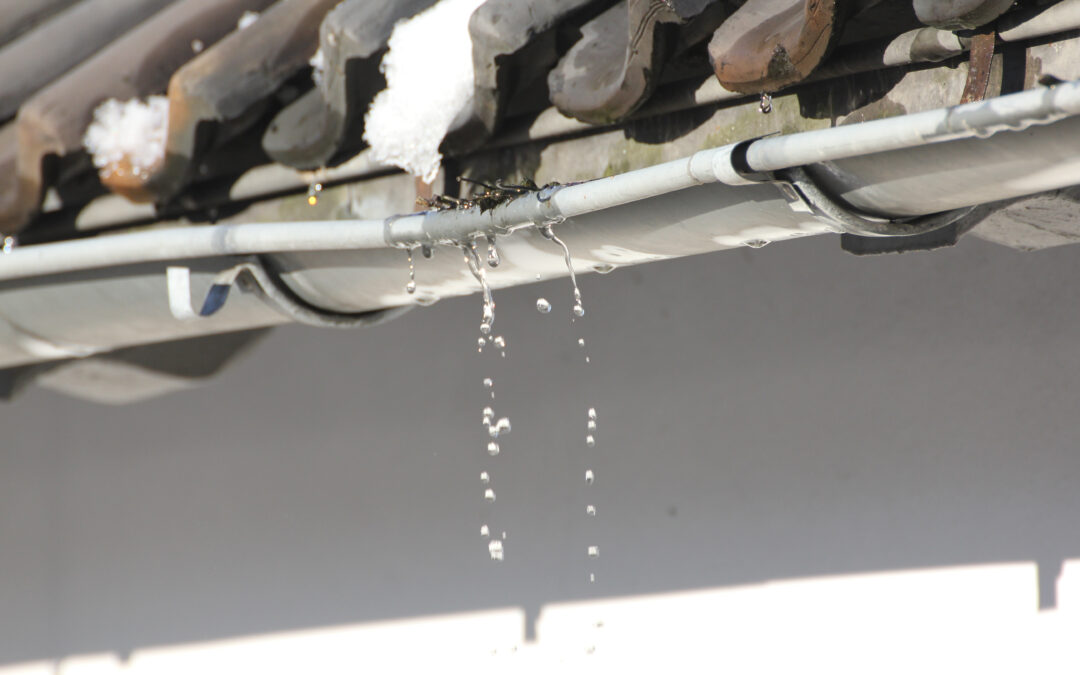
by Jeralin-Admin | May 16, 2023 | Gutter Systems
It’s not unlikely for your home to experience a leaking gutter. In fact, from time to time, homeowners may notice leaks during heavy rains. Many factors cause gutter leaks, and unfortunately, when a leak isn’t fixed promptly, it can lead to significant water damage.
Luckily, some of the most common causes of leaking gutters have simple solutions, so you can easily prevent additional damage to your home.
Top 5 Causes of Leaking Gutters (And How To Fix Them)
If you’ve noticed a leaking gutter recently, a closer look at the affected area should reveal the cause of the problem. Some issues you may be able to fix on your own, and others may require a helping hand from your local roofer.
1. Clogs
When trees are present near the home, clogs can occur in your gutters. Everything from dried leaves and branches to pine needles and twigs collects in the narrow channels, eventually causing a blockage. The clog then inhibits the water’s movement through the gutter to the downspout, resulting in a leak.
Solution: Cleaning your gutters a couple of times yearly and after major storms can help prevent future clogs. If your gutters experience frequent clogs, you should consider installing gutter guards to keep your drains clog-free and unwanted debris out.
2. Cracks and Holes
No matter the size, cracks and holes can prevent water from flowing through your gutters correctly. The holes are common signs of deterioration, storm damage, or normal wear and tear. If left unfixed, these seemingly insignificant openings will enlarge and lead to severe leaks and possible water damage.
Solution: Small cracks and holes can usually be fixed with a waterproof gutter caulk or sealant at your local hardware store. For larger holes, consider replacing the damaged gutter.
3. Separated Joints and Improper Seals
Over time the joints connecting each gutter and their seals may begin to wear down. This deterioration can eventually cause a separation or broken seal, leading to a gutter leak. Although this problem can often be seen without water, the split in your gutter could be small enough to go unnoticed until water is pouring over the gutter’s sides or leaking at the seams.
Solution: Depending on the severity of the damage, you may be able to reattach the separated joints and reseal the seams on your own with a waterproof gutter caulk or sealant. However, if the damage is extensive, consider replacing the gutters with a custom-made, seamless gutter system to prevent future mishaps.
4. Loose Fasteners
The fasteners used to secure gutters to your home’s fascia boards will become loose as they age. When this happens, the loose fasteners can shift the gutter and prevent water from moving through the channel correctly, resulting in a leak.
Solution: Determine what was used to affix the gutter to the house. It may have been a nail, screw, or something. Then locate the loose fastener and tighten or replace it.
5. Improper Slope
Gutters that were installed at the wrong angle often lead to various issues. Because gutters must be installed at a specific angle, low and high slopes will result in different leaks. Low slopes, for instance, tend to allow debris to quickly build up and create clogs. High slopes can cause water to spill over the edge of the gutter instead of through it.
Solution: If your gutters are frequently affected by either of these issues, it’s best to contact your preferred contractor. An expert should be able to adjust the gutter’s slope and resolve any leaks.
3 Expert Tips to Prevent Future Gutter Leaks
- Clean your gutters regularly.
- Make sure gutters are properly installed.
- Regularly Inspect gutters for damage.
Turn to Werner Roofing for All Your Gutter and Roof Needs
If you’ve checked your gutters for all the common causes and still can’t figure out the problem, a little help from the Werner Roofing & Exteriors professionals may be the best course of action. Our contractors have many years of experience repairing and installing gutters. With a closer look, they can identify almost any problem. So, whether you need a helping hand or an expert opinion, we know just how to fix your gutters before your home suffers additional damage.
Got a leaky gutter? Contact our team today, and we’ll help you find a long-lasting solution for your gutters.
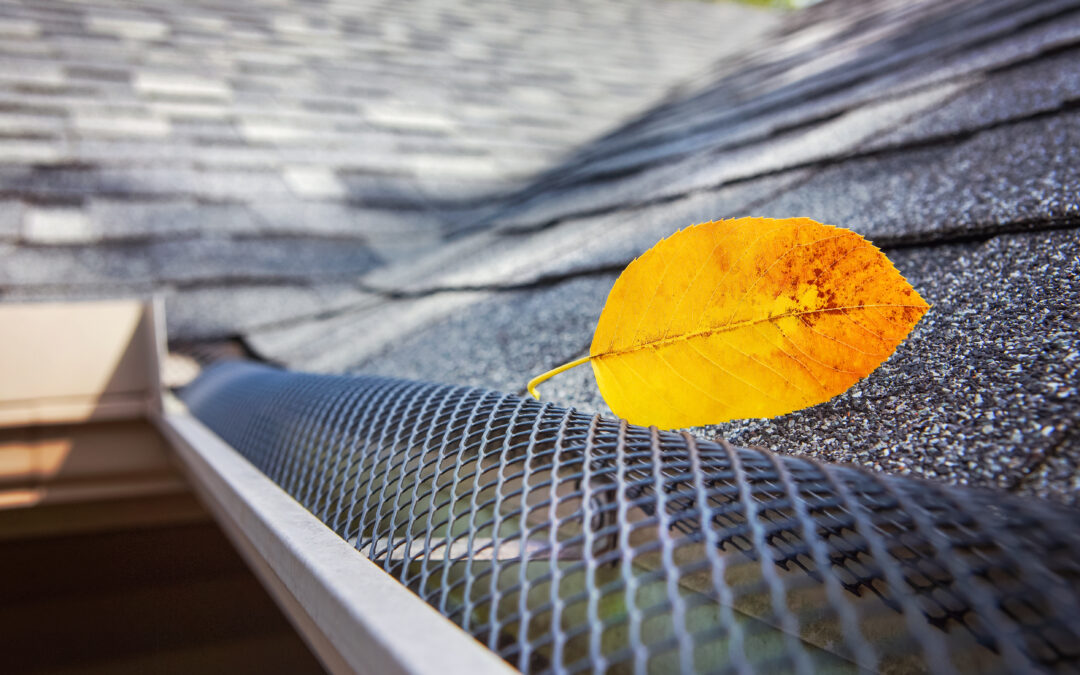
by Jeralin-Admin | Apr 24, 2023 | Gutter Systems
What Are Gutter Guards? (And Are They Worth It?)
A gutter guard is a gutter protection system that covers your gutters to keep debris out. Gutter guards can slow the buildup of miscellaneous debris, but no gutter guard is 100% effective. Read on to discover more about what are gutter guards, the advantages and disadvantages of gutter guards, the best gutter guards on the market, and whether or not they’re really worth it.
ADVANTAGES OF GUTTER GUARDS
Avoid Clogged Downspouts
Clogged downspouts can make water overflow and pool in your gutters and, in some cases, on top of your roof, which may lead to leaks or other water damage. Gutter guards can minimize this potential and ensure that water makes it away from your house and won’t seep into your foundation or basement.
Easier Maintenance
Gutter guards and gutter cover systems also make it much easier to maintain your gutters. While regular maintenance is still necessary, implementing gutter guards makes cleaning out a small amount of dirt and debris or leaf build-up easier than cleaning out tons of waste you’ll get from completely exposed gutters.
Improved Aesthetics
By preventing organic matter from piling up over time, things won’t grow out of your gutters as consistently as they would if a gutter guard system were not in place. Your gutters will look cleaner, more streamlined, and the outside of your home will be much more aesthetically pleasing.
DISADVANTAGES OF GUTTER GUARDS
Warranty Issues
Some types of gutter guards can negatively affect your roof’s warranty depending on how installed. Guards attached to your roof shingles with nails or other hardware can void your roof warranty, putting you at risk of having to cover the damages.
Covered Gutters Can Slow Water Flow
The more covered and protected your gutters are, the slower the water flow will be. Debris will get into the gutters no matter what, and though the amount will be less, the wrong type of gutter guard could actually trap more debris.
Negative Affect on Appearance
Though a gutter guard system can stop leaves from getting into your gutters, debris can still accumulate on top of the guard. When this occurs, your home will look worse than if you never installed the system in the first place.
DIFFERENT TYPES OF GUTTER GUARDS
Mesh Gutter Guards
Do you deal with clogged and backed-up gutters? Gutter guards can help! What are gutter guards? We have everything you need to know in this helpful blog.
Do you deal with clogged and backed-up gutters? Gutter guards can help! What are gutter guards? We have everything you need to know in this helpful blog.
Do you deal with clogged and backed-up gutters? Gutter guards can help! What are gutter guards? We have everything you need to know in this helpful blog.
A mesh gutter guard has holes that block debris, but water can still flow through the gutter system. Mesh gutter guards are durable and will block out most debris, and should rarely be removed for cleaning. The debris collects on top of the guard and flows off the roof’s side.
The issue with mesh gutter guards is that they are one of the most expensive leaf guard options, though the functionality seems more than worth the cost.
Micro-Mesh Gutter Guards
Micro-mesh gutter guards are mesh gutter guards with smaller holes that ensure that virtually no debris can get through the guard. Since these guards block the most waste, justifying a micro-mesh gutter guard purchase is easy.
Micro-mesh gutter guards need to be professionally installed, and you should be sure about the quality of the option you choose; however, for the most part, micro-mesh gutter guards will not disappoint.
Reverse Curve/Surface Tension Gutter Guards
The reverse curve/surface tension gutter guard will allow water to flow around the guard and into the gutter. The gutter guard allows water to pass through while blocking debris from entering the gutter.
A reverse curve gutter guard must be professionally installed and roof shingles need to be lifted for installation, which may cause some damage. In addition, surface tension gutter guards are visible from the ground, which may be unpleasant for the overall look of your home.
OUR GUTTER GUARD RECOMMENDATION
With several gutter guards on the market, finding which brand or brands of gutter guard is the best is challenging. While we know you’ll choose what’s best for you and your home, we’d recommend Leaf Slugger.
With Leaf Slugger, you pay one time and a certified professional will install high-quality aluminum gutter covers on your home. Leaf Slugger knows the damage poor gutter maintenance can cause, so they’ve designed three guards to protect homeowners from leaky roofs, mold and mildew, and mold buildup.
Leaf Slugger offers three unique products for your gutter guard preferences, each designed to make your life easier and keep your gutters free of debris at a reasonable, one-time price.
CLEANING GUTTERS
Even with gutter guards in place, your gutters still need to be cleaned regularly. Your gutters should be cleaned twice a year or more, depending on the area in which you live.
As a rule of thumb, it’s best to have your gutters cleaned every spring and fall. Clean your gutters in the spring to help get rid of any debris in your gutters from winter storms, and fall, to remove leaves and debris that have accumulated from the summer. However, if you live in a tree-heavy area, seasonal gutter cleaning up to four times a year may be necessary.
Get Great Gutters With Werner Roofing
If you’re considering a gutter guard for your home, Werner Roofing would love to help! We’re one of West Michigan’s premier roofing installation experts, and we’re happy to answer any of your roofing and gutter questions and provide the best recommendations and services in the area. For more information give us a call at 616-844-5382, or leave us a message online today.
OUR FREE ROOF INSPECTION
How do you know when it’s time for a new roof? The only way to be sure of your residential roof’s current condition is to have a licensed professional personally inspect it. Werner Roofing is proud to offer free roof inspections for every client, so you can be sure of your roof’s condition. Every Werner Roofing inspection comes complete with our promise: “We won’t recommend or sell a roof replacement unless it’s necessary.”
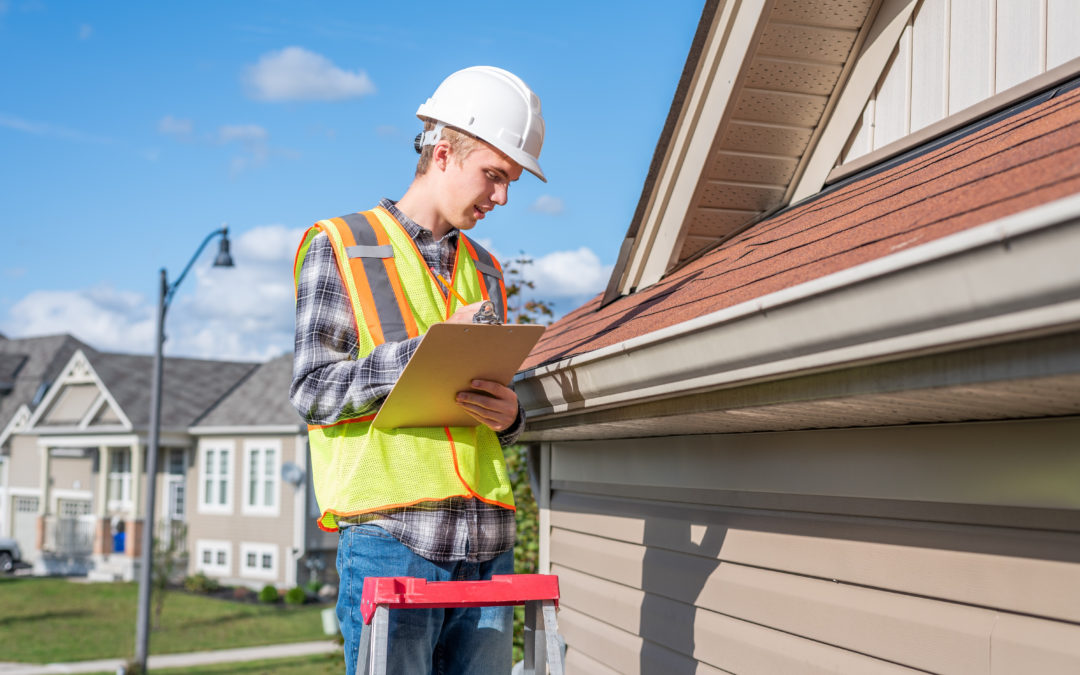
by Jeralin-Admin | Jan 16, 2023 | Gutter Systems
If you’re purchasing a new home, you want to ensure it’s in the best possible condition. When you get it inspected, there’s a collection of requirements and codes that it must meet. If you notice that the home doesn’t have gutters, you might wonder, “Does a house need gutters to pass inspection?” We’re here to tell you everything you need to know.
Does a House Need Gutters To Pass Inspection?
In short, the answer is no — a house does not need gutters to pass inspection. Gutters aren’t code-mandated, so a home inspector is unlikely to call out missing gutters. However, if the inspector notices damage to the property that could be due to the lack of gutters, they may recommend that you install them.
Legislation doesn’t require gutters, but they can help protect your home from various problems, including soil erosion, rot around the base of the house, or damage to the foundation.
Do Home Inspectors Check Your Gutters?
During the home inspection process, the inspector should examine the gutter system (if you have one). They’ll look at the gutters, downspouts, and water flowing away from the foundation. Here’s what they’ll be keeping their eyes out for:
- Debris clogging the gutters, preventing proper water drainage
- Evidence of overflow from the gutter system
- Secure gutter piping that’s sloped to ensure water can flow freely
- Leaks caused by damage, cracks, splits, or rust
- An adequate number of downspouts
- If downspouts discharge onto the roof surface
- Damage to the foundation from the downspouts
How Can I Tell if My House Needs Gutters?
When you’re house shopping, you’ll notice that not every home has gutters. While gutters aren’t required to keep a home up to code, they can be a fantastic investment that can help protect your house.
If you’re wondering if your house needs gutters, several factors come into play. Here’s what you need to evaluate:
-
- Overhang – Typical roof overhangs used to protect from rainfall are 16-18 inches wide. If your overhang is less than this, consider installing gutters.
- Climate – If you live in an area that doesn’t experience a lot of snow or rainfall, gutters might not be necessary. The amount of water falling along and off the roof isn’t significant enough, and water damage is unlikely to occur.
- Eave flashing – If your home already has eave flashing, that could be enough to protect it. If it doesn’t, you could have bare wood exposed, and water could rot your roof. Adding eave flashing or gutters will prevent this.
-
- Slopes – Implementing a gutter system is a good idea if your home sits at the bottom of a hill or other upward slope. Without gutters, rainwater could build up around your foundation instead of moving away from it.
Werner Roofing Is Here for All Your Gutter Needs
Do you need help preparing for your home inspection, or do you have repairs to make post-inspection? Werner Roofing is here to help!
Our Werner Roofing team can come to your property and evaluate your roof’s condition at no cost. We’ll make recommendations for maintenance or repair and provide you with a free estimate to get your roof in tip-top shape. Give us a call today to schedule a roof inspection, repairs, or, if need be, a roof replacement by dialing 616-844-5382 today.
OUR FREE ROOF INSPECTION
How do you know when it’s time for a new roof? The only way to be sure of your residential roof’s current condition is to have a licensed professional personally inspect it. Werner Roofing is proud to offer free roof inspections for every client, so you can be sure of your roof’s condition. Every Werner Roofing inspection comes complete with our promise: “We won’t recommend or sell a roof replacement unless it’s necessary.”








